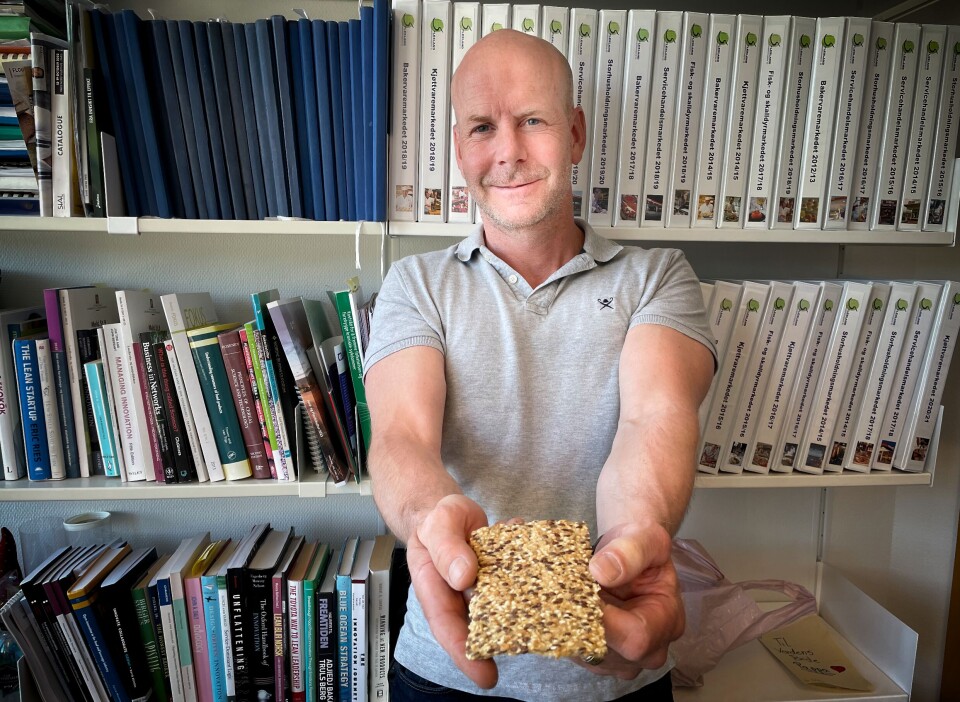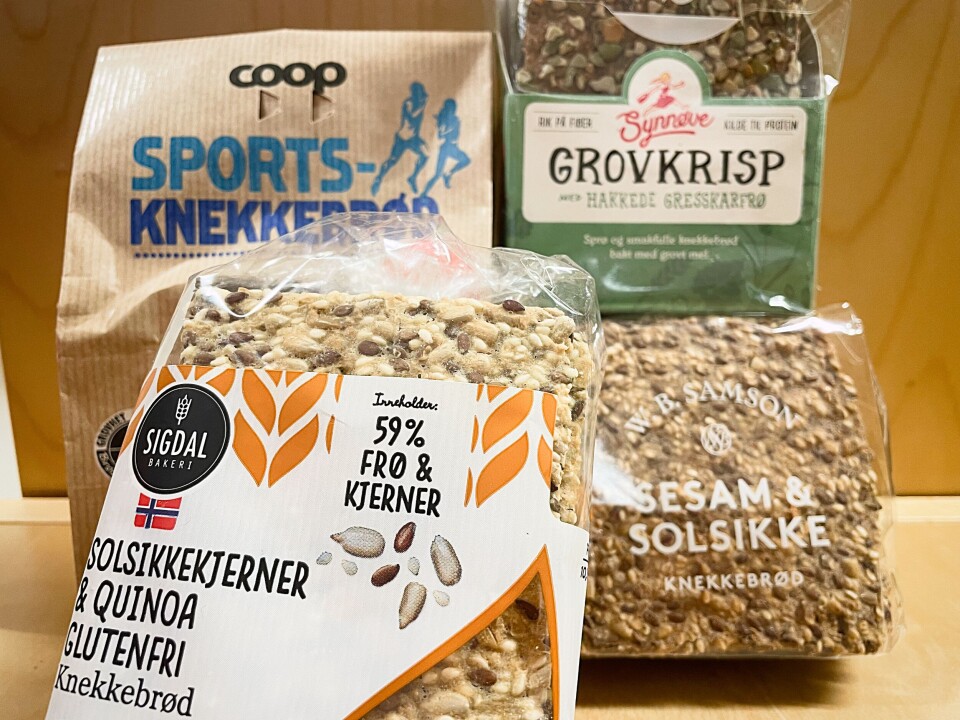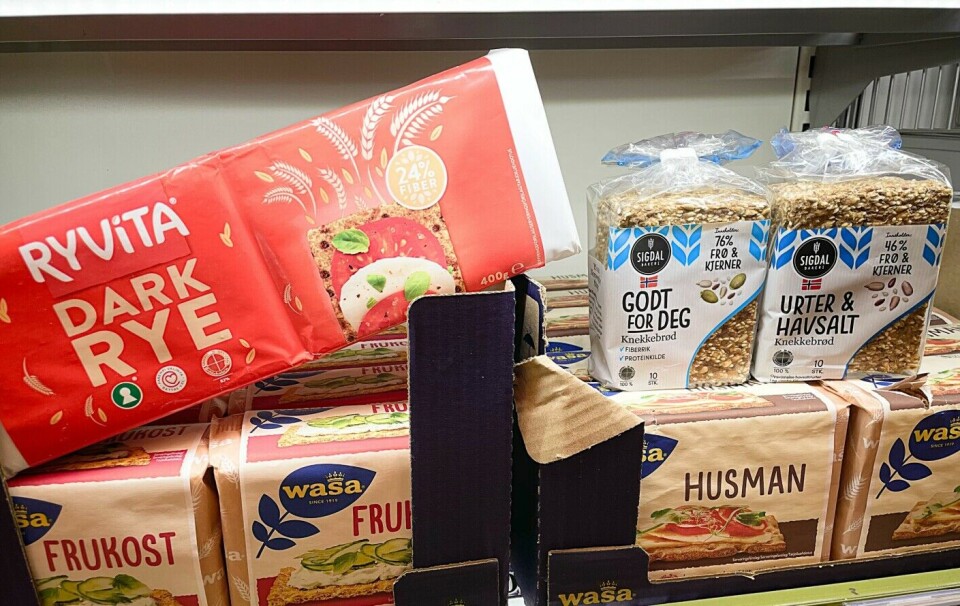
Why have so many started eating Norwegian crispbread?
Norway's export of crispbread has grown from almost nothing to over two thousand tonnes in 2023. We Norwegians have also embraced the new and expensive crispbreads.
“This happened very quickly, yes,” notes Sveinung Grimsby at the research institute Nofima.
Norway has become the new crispbread nation
Sweden is known as the world's leading crispbread nation, with the producer Wasa being the largest factory. The second largest is the British producer Ryvita.
Last year, the value of Norwegian crispbread exports was NOK 185 million, close to 17.5 million USD.
How has the Norwegian food-producing industry – which is hardly known for exporting anything other than Jarlsberg cheese – managed to become prominent in a product like crispbread?
Especially a crispbread that you can easily make just as well on your kitchen counter at home.
The food researchers at Nofima might be part of the explanation.
At least 500 years old
The food industry is conservative.
This is mostly due to us consumers.
We claim that we want to try new and exciting food. But year after year we go to the store and buy exactly the same products.
Crispbread is not a new food. Scandinavians started making it at least 500 years ago. Some believe that the Vikings brought crispbread with them on long boat trips.
Sweden is the nation everyone thinks of when they hear the word crispbread. Swedish Wasa crispbread can be bought in at least 40 countries around the world.
Was baked at home by people
“A few years back, there was little Norwegian crispbread to be bought in regular stores. No Norwegian crispbread industry of any significant size existed,” he says.

“But at home, people were baking more and more crispbread,” says Sveinung Grimsby.
Many discovered how easy it was to make much better crispbread on their kitchen counter than the Swedish versions available in stores.
Small bakeries like Rosenborg Bakeri in Trondheim and Samson and Baker Hansen in Oslo realised they could do exactly the same.
Came up with an idea
Then one day, some researchers and employees in the baking industry received some funding from the Research Council of Norway to try to come up with new ideas for Norwegian food based on grains.
A total of 17 ideas were noted down, says Grimsby.
One of them was to make luxury crispbread. A truly excellent crispbread that resembled what people were increasingly baking at home.
“This turned out to be a success,” Grimsby says.
Today, over two thousand tonnes of Norwegian high-end crispbread are exported annually, according to Grimsby.
Just over ten years ago, the small village of Sigdal, not far from Oslo, had a tiny bakery with a few jobs on the brink of bankruptcy. Today, that bakery competes with the big players in the world.
The scale of Norwegian crispbread production is still clearly smaller than the Swedish. However, since each slice of Norwegian crispbread costs many times more than the typical Swedish slices, the revenues are substantial. The bakery in Sigdal is now owned by the Norwegian startup United Bakeries, and parts of the production take place in Porsgrunn.

A special feeling in Paris
A year and a half ago, Sveinung Grimsby visited the world's largest food fair in Paris.
“Seeing a large Norwegian stand there with people flocking to taste Norwegian crispbread gave me a rather special feeling. It was really fun,” he says.
Norway has Jarlsberg cheese, exports two tonnes of fenalår (cured meat), and some brown cheese each year. There is also Norwegian aquavit export.
But there were not many other examples of the Norwegian food industry successfully exporting finished products. Norway is now exporting crispbread as well, and it’s doing very well.
You have to trust your competitors
Creating a new and successful Norwegian food product from something you can easily make at home involves more than just inventing something completely new.
It's about the product's texture. It needs to be marketable as healthy food. And above all, it has to taste great.
It also requires complex cooperation between businesses that are usually competitors.
“We’ve learned a lot about what can be achieved through innovation, openness, and collaboration,” says Grimsby.
Secrecy in the food industry
There is a lot of secrecy in the food industry.
“But when the players in the industry trust each other and aren’t so afraid that they might accidentally reveal some trade secret, then truly magical things can happen,” he says.
Grimsby and his colleagues at Nofima are aware that a similar success can be achieved again.
“Today, much of the focus is on eating more greens. Beans and peas are protein-rich vegetables that can be grown in several places in Norway now that the climate has become warmer,” he says.
“These new Norwegian raw materials offer many opportunities. However, we are still far behind our neighbouring countries in organic food production.”
Grimsby now dreams of collaborating with other players in the Norwegian food industry to create an outstanding vegetarian burger.
———
Translated by Alette Bjordal Gjellesvik
Read the Norwegian version of this article on forskning.no
References:
Grimsby, S. & Finne, C.K. 'How open is food innovation? The crispbread case', British Food Journal, vol. 121, 2019. DOI: 10.1108/BFJ-07-2018-0462 (Abstract)
Grimsby, S. Radical innovation in a conservative industry. Selected cases of new product development in the Norwegian food industry, Doctoral thesis at the University of Oslo, 2021.




































